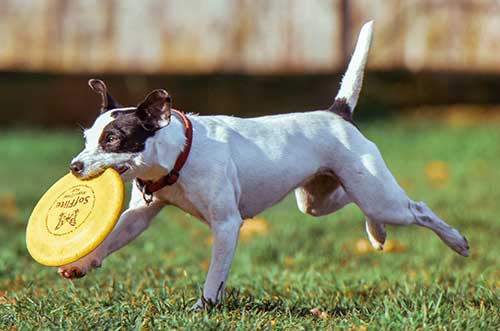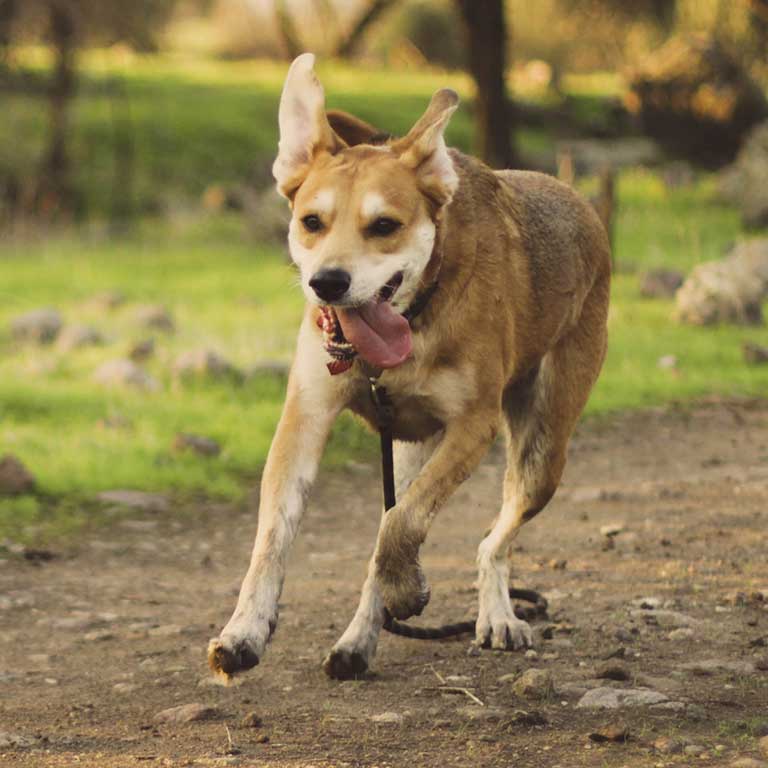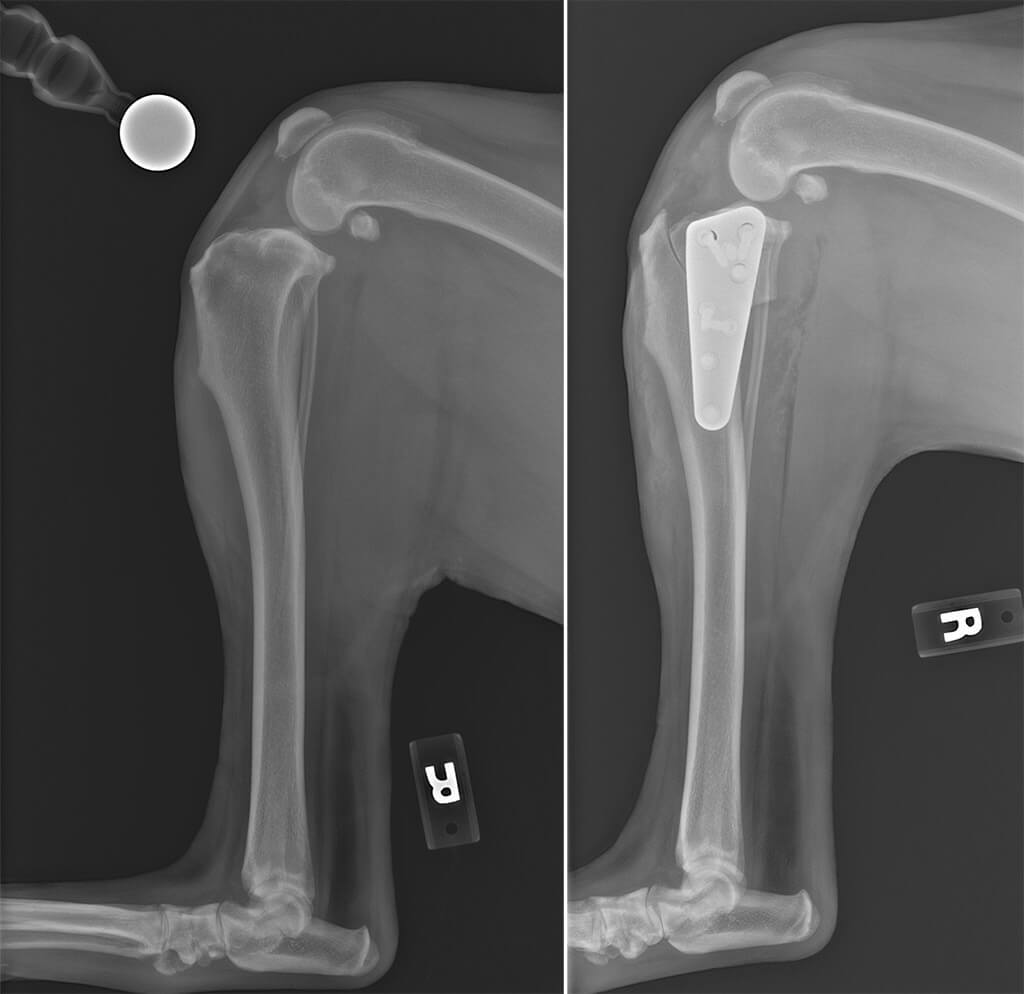Canine TPLO
Tibial Plateau Leveling Osteotomy
Your pet was recently diagnosed with a ruptured cranial cruciate ligament or an ACL tear...
What's next?
A cranial or anterior cruciate ligament injury is one of the most common causes of rear leg lameness in dogs.
Some dogs are more susceptible to it than others (like the Akita, Labrador Retrievers, Golden Retrievers, American Bulldogs, English Bulldogs, and Rottweilers) but there are many other factors that can be a precursor to CCL or ACL problems as well:
- Being Overweight
- Breed and Joint Confirmation Issues
- Strenuous Exercise or Activity
Submit form for pricing estimate or to schedule an appointment.

The good news is that 96+% of dogs can return to normal activity with the right surgical intervention, physical therapy and 8-10 weeks of restricted activity.
The bad news is this won’t go away on its own, and the longer you wait the less the chance of success.
Here’s what is going on if your dog has a Cranial or Anterior Cruciate Ligament condition.

Basically, in layman’s terms, the femur (top leg bone) and the tibia (lower bone) no longer have the stability needed to align properly one over the other. It is caused by a stretched or partially torn ligament which allows the tibia to move forward and out of place. This may have happened instantly, from trauma, or over time with increased stretching or tearing of the ligament. In addition, because the tibia is now able to move out of place, the meniscus (the shock absorbing material between the upper and lower bones) frequently becomes damaged.
This won’t heal itself. The condition and pain will only become worse over time. It takes surgical intervention to fix the problem.
What is the treatment?
Tibial plateau leveling osteotomy (TPLO), a surgery we’ve successfully used since 2004, is used to stabilize knee joints that have suffered acute or chronic cranial cruciate ligament injury. During this procedure we’ll look at the medial meniscus to assess any damage. If required it may be removed; if not we often use a releasing technique to prevent future entrapment or damage. The top of the tibia is then cut with a specialized TPLO saw that allows the bone to be rotated to a predetermined measurement/angle and leveling the tibia plateau.
Your pet will spend the night in the hospital with 24-hour doctor supervision and nursing care. The majority of our patients are discharged the following day with instructions for care and restricted activity for the next 8 weeks. Recheck examinations and physical therapy are scheduled at 2, 4 and 8 weeks post surgery. Most patients exhibit gradually increasing weight bearing within 2 to 10 weeks after surgery.
Want to know the secret for a full recovery and a happy, active life for your dog?
Don’t wait. Don’t assume your dog will be better over time. The longer you wait for treatment the harder the problem is to correct and the chances for full recovery drop off considerably. Contact us now using the form above for a consultation. Get your questions answered, find out what your next steps should be and let us correct your dog’s painful injury - quickly!

